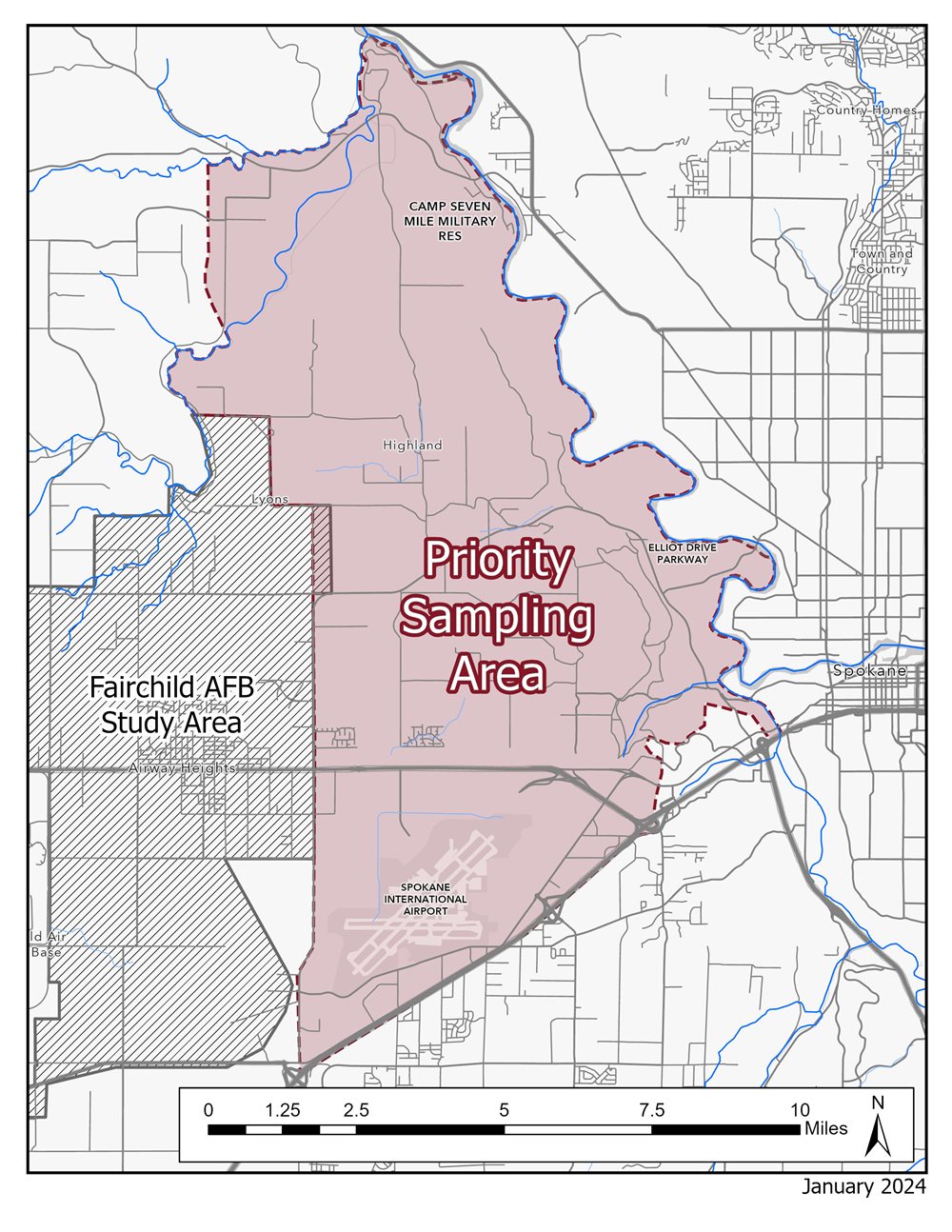PFAS in West Plains private wells
We are working with the Environmental Protection Agency (EPA), Department of Health, Spokane Regional Health District, Eastern Washington University, and the West Plains Water Coalition on per- and polyfluoroalkyl substances (PFAS) contamination in groundwater in the northeast West Plains near Spokane.
To ensure people are drinking safe water, we partnered with the EPA to sample 307 private wells in the priority sampling area at no cost to residents during March 2024. We appreciate everyone's participation in this sampling, and you can expect to receive your results about one month after your sampling appointment.
We invite you to share your results with us, even if PFAS wasn't detected in your water. The results will help us better understand where and how much PFAS contamination is in the West Plains. The EPA will not share your drinking water results with us to protect your personally identifiable information (your name, address, and phone number) under the Privacy Act.
The EPA sampled 307 private wells in this area at no cost to residents in March 2024.
When will I receive my sampling results?
An accredited laboratory will analyze your drinking water sample for PFAS, using a strict quality control process to ensure accurate results. The current resident and homeowner will get the results by mail and email (if provided) as soon as possible, usually about one month after your sampling appointment.
The results are compared against the Washington State Model Toxics Control Act recommended cleanup levels and the Washington’s State Action Levels (SALs) for the safe long-term consumption of drinking water.
Sampling results public meeting, 6:30 p.m. on May 21 at the Hub
Ecology and the EPA are hosting a meeting to help people understand their sampling results and offer assistance with next steps.
- 6:30 p.m., Tuesday, May 21, 2024
- The Hub, 12703 W 14th Avenue, Airway Heights
Why should I share my results with Ecology?
Sharing your results is completely voluntary, and it will accelerate our investigation into PFAS sources. Ecology will use this data to support efforts of local partners to:
- Provide safe water to people with PFAS in drinking water above Washington’s SALs.
- Map the area of known contamination and share this resource with the community.
- Help define additional source areas.
Data you provide to Ecology may be subject to public records requests and disclosure.
What if my water has PFAS in it?
If PFAS is in your water at higher concentrations than Washington’s State Action Levels, we can take interim actions such as supplying safe drinking water and point-of-use filtration systems. These efforts can help until investigation and cleanup of PFAS sources provide more permanent solutions.
How did Ecology choose the priority sampling area?
We selected the priority sampling area based on our understanding of groundwater flow direction and the sample results people have shared with us so far. We understand that groundwater flows north to northeast in this area. As a result, the priority sampling area did not focus south of Interstate 90. Lastly, we had very limited data from the priority sampling area and needed initial information to help better define PFAS contamination.
I don't live in the priority sampling area. What happens now?
If the address you provided wasn’t in the priority sampling area, then unfortunately we don’t plan to sample your drinking water at this time. However, please continue to visit this webpage and join our West Plains PFAS updates email list for the most up-to-date information about contamination sources, work toward long-term solutions, and links to other helpful resources.
You may also go through an accredited laboratory to have your water tested for PFAS. There are two test methods. EPA method 533 tests for 24 PFAS. EPA method 531.7 tests for 18 PFAS. Both will detect the five PFAS with a State Action Level.
Related links
Contact information
Erika Beresovoy (she/her)
Public Outreach Coordinator
WestPlainsPFAS@ecy.wa.gov
509-385-2290


